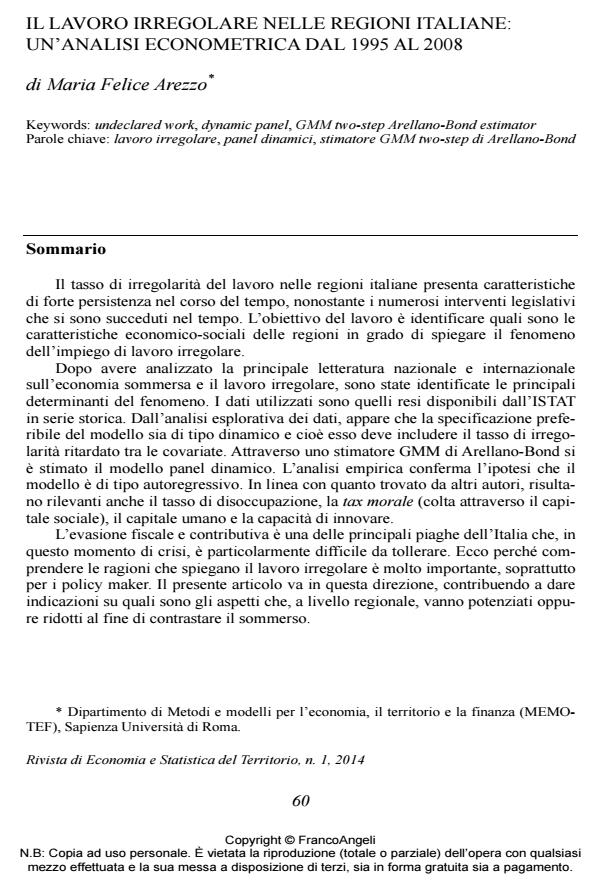Undeclared work in Italian regions: an econometric analysis in the time span 1995-2008
Journal title RIVISTA DI ECONOMIA E STATISTICA DEL TERRITORIO
Author/s Maria Felice Arezzo
Publishing Year 2014 Issue 2014/1
Language Italian Pages 18 P. 60-77 File size 994 KB
DOI 10.3280/REST2014-001003
DOI is like a bar code for intellectual property: to have more infomation
click here
Below, you can see the article first page
If you want to buy this article in PDF format, you can do it, following the instructions to buy download credits

FrancoAngeli is member of Publishers International Linking Association, Inc (PILA), a not-for-profit association which run the CrossRef service enabling links to and from online scholarly content.
Undeclared work rate in Italian regions has strong persistency features. It has remained constant or slightly increasing over decades, despites numerous laws aiming at reducing it. The aim of the paper is to identify the socio-economic characteristics that explain regional undeclared work rates.
Keywords: Undeclared work, dynamic panel, GMM two-step Arellano-Bond estimator
Jel codes: C01, C23, O17, J46
Maria Felice Arezzo, Il lavoro irregolare nelle regioni italiane: un’analisi econometrica dal 1995 al 2008 in "RIVISTA DI ECONOMIA E STATISTICA DEL TERRITORIO" 1/2014, pp 60-77, DOI: 10.3280/REST2014-001003